What do you need to grow a successful nonprofit without burning out?
Hello, world changer!
First of all, I’d like to give you a big warm CONGRATULATIONS! ????
You’ve made it this far, and your hard work is going to make a lasting impact on hundreds (even thousands) of lives.
Your nonprofit is going to change the world. ????
That said, I know it’s not easy.
Already, you’re feeling the pressure.
You need the confidence to step up and become the leader you’re supposed to be, but you’re not sure you can do it.
You don’t know how you’re going to run a successful nonprofit without giving up your own happiness.
Maybe you’re even on the point of burnout, having given everything you have to the cause you believe in.
If this is you, this blog is for you.
In it, I’ll show you:
- The two elements you need for a successful nonprofit
- How to keep from burning out on your journey to achieving what you believe in
- Three essential components that’ll ensure you exponential growth
- And more!
Let’s get started.
HEART AND MIND: TWO ELEMENTS YOU NEED TO COMBINE FOR A THRIVING NONPROFIT
Flashback to 2011.
I was a senior at West Point and I knew that after graduation, I would go straight into combat.
I ended up serving on two tours in Iraq, and what I learned from it is that an organization can be high in heart but low in excellence.
Later, I ended up in a consulting firm which was the complete opposite: high in excellence but low in heart.
What I realized from these two experiences is that you need to combine heart and excellence for a successful nonprofit.
- You need the heart to care and believe in what you’re doing.
- You need the skills and techniques that’ll help you grow and prevent you from burning out.
Once you have these two elements, you’ll have what it takes to build your nonprofit and keep it going strong through the hard times.
Want tips on maximizing your impact as a non-profit leader? Follow me on Instagram: @sparrowsolutions.
3 Phases You Need to Go Through to Accelerate Growth
I know, there’s a ton of questions zipping through your head right now.
You want to change the world, but can you really do it?
You believe in the nonprofit you’ve started, but can you dive in with both your feet?
Will going all out mean sacrificing your happiness?
If you already feel you’re burning out, what can you do to turn things around?
It’s not simple to plan your nonprofit’s growth.
But there’s a proven way to do it, and it comes in three phases.
Let’s look at them one by one.
Phase 1, Part 1: Impact Mindsets
You can have a hundred measurements and processes written out.
You can have your organization’s goal and the next steps you’ll take set in stone.
But without the right mindset, none of it will matter.
Most average people don’t believe that they can do the impossible. The ones that step out and do the impossible have a strong, believing mindset. Walt Disney said it best:
“It’s kind of fun to do the impossible.” — Walt Disney
Mindset is the answer here. It can be the most important influence in a person’s success.
The right mindset makes all the difference between those who succeed and those who fail.
So, how do you start building the right mindsets for a thriving nonprofit?
Here are two things to keep in mind.
1. Find out where you are right now.
Before going on to designing where you want to go, it’s important to first sit down and ask yourself where you currently are.
Take a few days (or weeks!) to really ask yourself questions like:
- What is the impact of my organization right now?
- Is my team cohesive and effective?
- Are we going under because of stress and overwhelm?
- Do we have a foundation for long-term growth?
Remember, don’t hurry to answer these questions!
The longer you spend digging deep into their answers, the more you’ll know your organization and what mindsets you need for growth.
2. Find out where you want to go.
Unless you want to stay where you are, you’ll need to design that BIG from-to. This will take you from where you are now to where you want to be in the near future, and help you achieve the right mindset to accomplish this leap.
This involves:
- Diving deep into exactly why you exist
- What you want your organization to achieve
- What winning is like, and what you are when you’re winning
Again, never hurry when filling out the details of your plan. It’s better to take too long in the planning stage than to rush ahead and realize you’re heading in a direction you didn’t want to go.
Once you know where you are and where you want to go, it’ll be easy to form mindsets that allow you to grow instead of limit yourself.
Phase 1, Part 2: Impact Skills
The next step in Phase One of growing your nonprofit is assessing the current state of skills in your organization.
This comes in two parts:
- Assess the skills of your whole organization combined
- Assess the skills of each individual in your organization
After you’ve taken note of the skills you already have, list down the skills you need to add to achieve more.
Remember, you don’t always have to look for the skills you’re missing outside your organization.
A ton of the time, your people already have them, and all you need to do is teach them to unleash these skills.
Lastly, take note of the weaknesses and flaws in your organization. Set a mitigation scheme for every one of them.
Phase 2: Impact Processes
Question.
How do you keep giving your all to your organization without burnout?
I know, the going can get tough.
You’ll find yourself face-to-face with hurdles, roadblocks, and questions along the way.
But there’s a secret to keep growing without burning out.
Here it is: build your own impact processes, which you can keep repeating for consistent growth.
Why do I say you need to “repeat” your processes?
Well, here’s the thing.
There’s A LOT of reinventing the wheel in the nonprofit sector.
Nonprofit leaders decide on a plan of action, then ditch it to react to anything new that comes up.
DON’T DO THIS.
What you need to do is stick to the processes you’ve built for growth, and repeat them continuously so growth becomes constant.
Trust me, your steady rhythm will help you achieve MORE in the long run than reactionary organizations.
Phase 3: Impact Measurements
Lastly, you’ll need to know how you’re doing along the way.
This involves being able to measure your growth in real numbers, and to know which key performance indicators (KPIs) to track.
Why is this important?
Three reasons:
- You get more of what you measure. This is how the world works. The act of measuring something results in MORE.
- You’ll want to yield REAL, MEASURABLE results. It’s not about feeling or hoping you’ve done enough. It’s about knowing EXACTLY how much you’ve accomplished. It’s about numbers.
- You’ll be able to use the observer effect for bigger impact. According to the observer effect, actively watching a process changes the outcome in a positive way.
To get yourself started, list down the KPIs you feel are important to you. Then, plan how you’re going to track them.
THE SECRET TO GROWING YOUR NONPROFIT WITHOUT BURNING OUT
So, you want to change the world.
Amazing! I’m super proud of you.
You’re willing to take a huge chunk out of your life, dive in with both feet, and do real good for a cause you care about.
But let me tell you, it won’t always be easy.
There will be days when you’re not sure if what you’re doing is right.
Days when you want to throw in the towel.
Days you’ll spend questioning yourself.
On these days, remember this: heart isn’t enough to grow your organization.
You also need the skills and techniques to take you from where you are to where you want to go.
So instead of feeling down and out, take time to sit down with your team.
Review the three phases above, and go through them one by one.
When you do, you’ll get a clearer picture of what you are now and what you want to become in the near future. You’ll be able to unleash your team’s skills. You’ll be able to grow steadily, and feel encouraged as you track your growth with real numbers.
Now, go on and take that first step.



